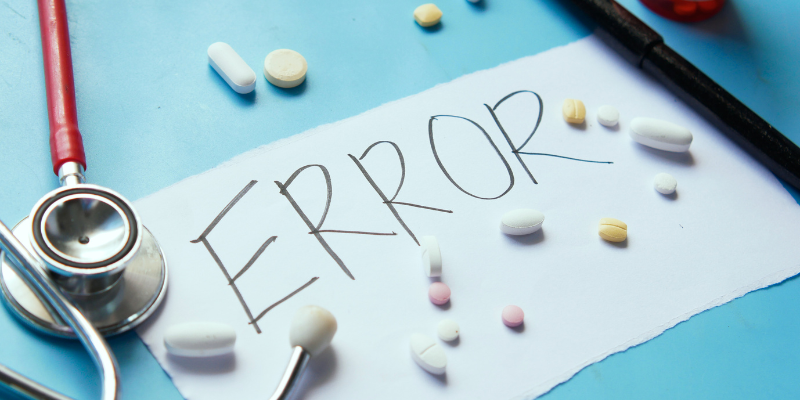Types of Medication Error
The following categories of errors have been used in numerous research studies:
Wrong drug error
A drug that was not ordered for a patient was administered—for example, a patient accidentally received furosemide 40 mg orally. Possible causes: The pharmacist accidentally filled the patient’s prescription for an antibiotic with furosemide; the pharmacist reached for the wrong bottle on the shelf and did not check the label carefully enough.
Extra dose error
A patient receives more doses of a drug than were ordered—for example, a patient was supposed to receive a medication with breakfast for 3 days but received it for 5 days. Possible cause: The patient’s nurse was confused by the medication directions.
Omission error
A dose of a drug was not administered as ordered but was skipped—for example, a patient was supposed to receive digoxin 0.25 mg orally in the morning but did not receive the dose. Possible cause: The patient’s nurse was so busy that he or she forgot to administer the dose.
Wrong dose or wrong strength error
Either the wrong dose of a medicine or the wrong strength is administered—for example, the patient was supposed to receive warfarin 0.5 mg but received warfarin 5 mg instead. Possible causes: The pharmacist misread the label; the physician wrote the order as “warfarin 0.5 mg.”
Another example: A patient was supposed to receive timolol 0.25% but was given timolol 0.5%. Possible cause: The pharmacist took the wrong product off the shelf, confused by the concentrations.
Wrong route error
A patient receives a dose of a medication by a route that was not ordered by the physician—for example, a patient was supposed to receive prochlorperazine 10 mg intramuscularly but the drug was administered intravenously. Possible causes: The nurse misread the orders; the physician mistakenly wrote “IV” instead of “IM.”
Wrong time error
A patient does not receive a dose of medication at the time at which it was to be administered—for example, a hospitalized patient with diabetes is scheduled to receive a dose of insulin immediately before breakfast (at 7:00 a.m.), but the dose is given 2 hrs after breakfast. Possible cause: The nurse was busy and could not give dose on time.
Wrong dosage form error
A patient receives a dose of medicine in a dosage form that was not intended— for example, nicotinic acid 500 mg tablets were ordered for a patient who instead receives nicotinic acid 500 mg slow-release capsules. Possible cause: The pharmacist did not carefully check the product or was confused by the label.
Other
Errors that do not fit into any of the other categories.
Read also:






